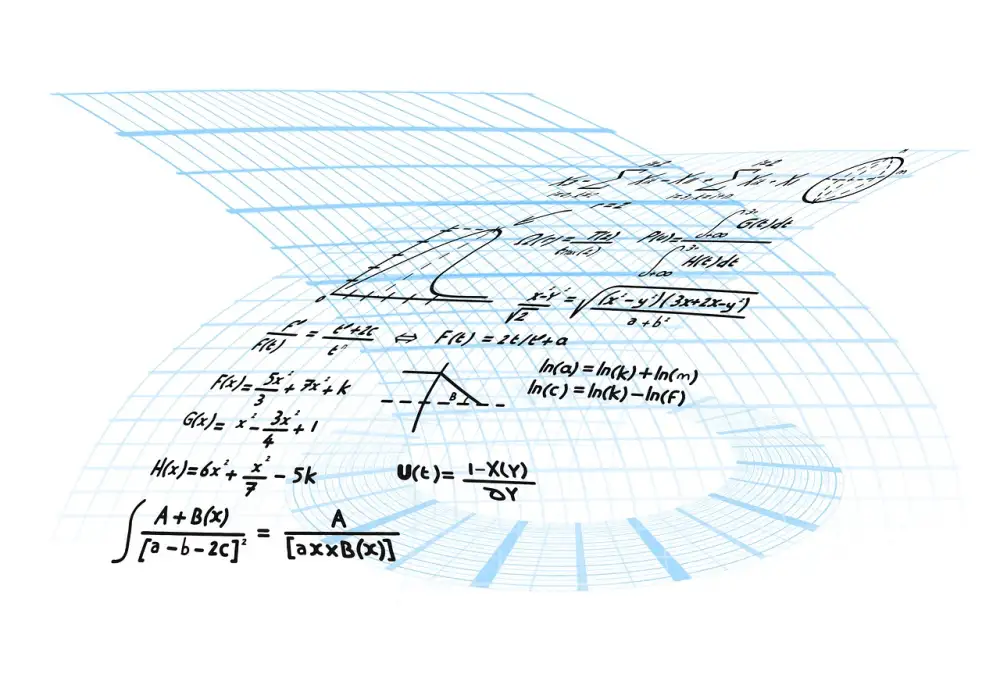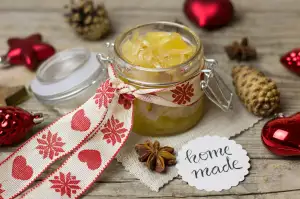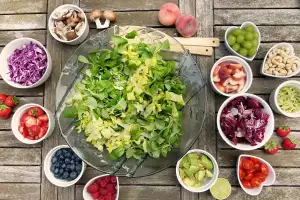Mastering Measurement Conversions: Unveiling the Secret of 2/3 Cup in Half!

Measurement conversions play a crucial role in the culinary world, allowing chefs and home cooks alike to accurately follow recipes and create delicious dishes. Whether you're working with cups, tablespoons, or ounces, having a solid grasp of measurement conversions is essential for culinary success.
In cooking, recipes often call for specific measurements of ingredients. However, it's not uncommon to come across measurements that are difficult to visualize or convert. One such measurement is "2/3 cup." While it may seem straightforward at first glance, many cooks struggle with understanding how to divide this measurement in half.
In this article, we will demystify the concept of "2/3 cup in half" and provide you with a step-by-step guide on how to convert this measurement accurately. By mastering this conversion technique, you'll be able to confidently tackle any recipe that calls for halving 2/3 cup. So let's dive in and unravel the secret behind this elusive measurement conversion!
Explaining the Concept of "2/3 Cup in Half"
When it comes to cooking, precise measurements are crucial for achieving the perfect balance of flavors. However, there are times when a recipe calls for an odd measurement like 2/3 cup, leaving us wondering how to divide it in half. Understanding the concept of "2/3 cup in half" is essential for any aspiring chef.
In simple terms, dividing 2/3 cup in half means finding an equal portion that represents half of this measurement. This is particularly useful when you need to adjust a recipe or scale it down without compromising on taste.
Mastering this conversion allows you to confidently navigate through recipes and create delicious dishes with ease. So let's dive into the step-by-step guide on how to convert 2/3 cup into half!
Step-by-Step Guide to Converting 2/3 Cup into Half
a. Start with 2/3 Cup Measurement: Begin by understanding that 2/3 cup is a common measurement in cooking, but sometimes you may need to convert it into half for certain recipes.
b. Divide 2/3 Cup by 2: To convert 2/3 cup into half, divide it by 2. This means dividing the numerator (2) by 2 and keeping the denominator (3) the same.
c. Result: 1/3 Cup - Half of 2/3 Cup: After dividing, you will get the result as 1/3 cup. This means that half of a 2/3 cup measurement is equal to 1/3 cup.
By following these simple steps, you can easily convert a measurement of 2/3 cup into its equivalent half, which is equal to 1/3 cup. This conversion will help you accurately adjust your recipes and ensure culinary success.
Start with 2/3 Cup Measurement
Start with the 2/3 cup measurement as indicated in your recipe. This measurement is commonly used in baking and cooking, so it's important to understand how to convert it accurately. Whether you need to halve the recipe or adjust the measurements for a smaller batch, knowing how to convert 2/3 cup into half will come in handy. Let's dive into the step-by-step process of converting 2/3 cup into half, ensuring precise measurements for your culinary creations.
Divide 2/3 Cup by 2
To divide 2/3 cup by 2, we need to understand the concept of dividing fractions. When dividing fractions, we multiply the first fraction by the reciprocal of the second fraction. In this case, the reciprocal of 2 is 1/2.
So, we have (2/3) * (1/2). To multiply fractions, we simply multiply the numerators together and the denominators together.
Multiplying across gives us (2 * 1) / (3 * 2), which simplifies to 2/6.
To further simplify this fraction, we can divide both the numerator and denominator by their greatest common divisor, which is 2 in this case.
Dividing both 2 and 6 by 2 gives us a final result of 1/3 cup. Therefore, when you divide 2/3 cup by 2, you get half of it, which is equal to 1/3 cup.
Result: 1/3 Cup - Half of 2/3 Cup
To convert 2/3 cup into half, we need to follow a simple step-by-step process. Start with the measurement of 2/3 cup in your recipe. Next, divide this measurement by 2. The result is 1/3 cup, which is exactly half of 2/3 cup. So, if your recipe calls for half of 2/3 cup, you can confidently use 1/3 cup as a substitute. This conversion will ensure that your dish maintains the right balance of ingredients and flavors.
Practical Applications of "2/3 Cup in Half" in Recipes
Understanding how to convert 2/3 cup into half can greatly enhance your culinary skills. This conversion is particularly useful when you want to adjust the quantities of ingredients in a recipe. Here are some practical applications of this conversion technique:
1. Scaling Down Recipes: Suppose you have a recipe that calls for 2/3 cup of flour, but you only need half the amount. By using the "2/3 cup in half" conversion, you can easily measure out 1/3 cup of flour instead.
2. Balancing Flavors: Sometimes, a recipe may call for 2/3 cup of a certain ingredient, such as sugar or vinegar, but you prefer a milder taste. Converting 2/3 cup into half allows you to reduce the intensity of flavors while maintaining the overall balance of the dish.
3. Customizing Portion Sizes: If you're cooking for fewer people than a recipe serves, converting 2/3 cup into half enables you to adjust the measurements accordingly. For example, if a recipe calls for 2/3 cup of diced tomatoes and you only need enough for two servings, converting it into half gives you approximately 1/3 cup.
4. Experimenting with Ratios: Understanding how to convert measurements opens up opportunities for experimentation in the kitchen. You can use the "2/3 cup in half" technique to explore different ingredient ratios and create unique flavor profiles.
By mastering this conversion method, you gain more control over your recipes and can confidently adapt them to suit your preferences or specific occasions. Remember to keep practicing and exploring various conversions to expand your culinary repertoire!
Tips for Accurate Measurement Conversions in the Kitchen
1. Use a reliable measuring tool: Invest in high-quality measuring cups and spoons to ensure accurate measurements. Cheap or worn-out tools can lead to inaccurate conversions.
2. Follow the recipe closely: Stick to the specified measurement units mentioned in the recipe. Converting between volume and weight can be tricky, so it's best to follow the recipe as closely as possible.
3. Understand conversion ratios: Familiarize yourself with common conversion ratios, such as 1 cup equals 16 tablespoons or 1 tablespoon equals 3 teaspoons. This knowledge will help you make accurate conversions on the fly.
4. Be precise with fractions: When converting fractions, remember that a half is equal to two quarters, three-sixths, or four-eighths. This understanding will come in handy when converting odd measurements.
5. Practice with common ingredients: Start by practicing conversions with commonly used ingredients like flour, sugar, or butter. This will help you gain confidence and accuracy in your measurement conversions.
6. Double-check your math: Always double-check your calculations when converting measurements. A small error can significantly impact the outcome of your dish.
7. Adjust cooking times if necessary: Keep in mind that changing ingredient quantities may affect cooking times. Monitor your dish closely and adjust cooking times accordingly to achieve desired results.
By following these tips, you'll be well-equipped to handle measurement conversions accurately in your kitchen adventures!
Understanding measurement conversions is a crucial skill for any aspiring chef or home cook. It allows us to follow recipes accurately and achieve the desired flavors and textures in our dishes. The concept of "2/3 cup in half" is just one example of how measurement conversions can simplify our cooking process.
By following the step-by-step guide provided, we can easily convert 2/3 cup into half, which is 1/3 cup. This knowledge opens up a world of possibilities in the kitchen, as we can now confidently adjust recipes to suit our needs or create new ones with ease.
Accurate measurement conversions are essential for achieving consistent results in our cooking. By using precise measurements, we ensure that the ratios of ingredients are correct, leading to perfectly balanced flavors and textures. This is especially important when working with delicate recipes like pastries or sauces.
To improve our measurement conversion skills, it's helpful to invest in quality measuring tools such as measuring cups and spoons. Additionally, taking the time to properly level off dry ingredients and use liquid measuring cups for liquids will result in more accurate measurements.
In conclusion, mastering measurement conversions is an essential skill for culinary success. Understanding concepts like "2/3 cup in half" empowers us to confidently adapt recipes and create delicious dishes. By practicing accurate measurements and utilizing proper tools, we can elevate our cooking to new heights and truly master the art of flavor.
Published: 17. 11. 2023
Category: Food



